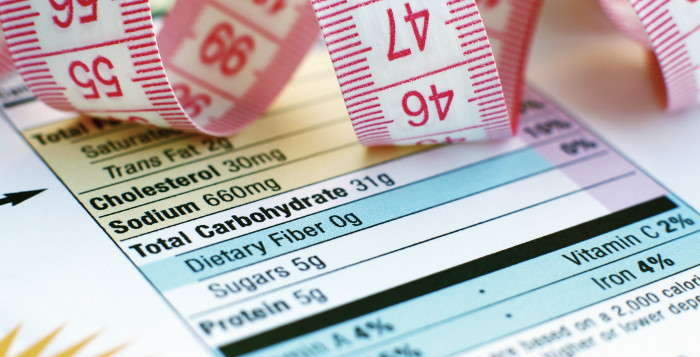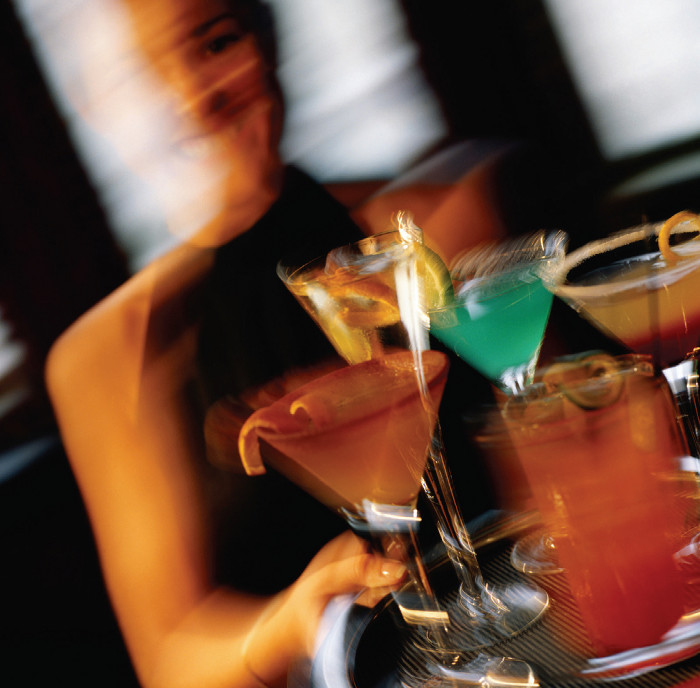In-depth

A numbers game
In In-depth
Bookmark
Record learning outcomes
Walk into any supermarket and you can check virtually any food item’s label for its calorie, fat, sugar and salt content. But pick up a bottle of wine or a can of beer and you may have no idea about its nutritional value. New proposals could be about to change this

The Royal Society for Public Health (RSPH) is calling on the drinks industry and EU Health Commissioner to introduce calorie labelling for alcoholic drinks, in a bid to help reduce Britain’s rising obesity levels. According to the National Obesity Forum (NOF), 25 per cent of UK adults are obese, and trends suggest this could rise above 50 per cent by 2050. Adults who drink get around 10 per cent of their calories from alcohol, yet alcohol is currently exempt from EU food labelling laws.
And it seems that many people are unaware of alcohol’s high calorie content. A survey in October 2014 by the RSPH revealed that 80 per cent of people are unaware that a large glass of wine can contain around 200 calories – the same calories as a doughnut – and almost 60 per cent have no idea how many calories there are in a pint of lager. However, 67 per cent of the survey respondents said that they would welcome calorie labels on alcoholic drinks packaging.
Shirley Cramer CBE, chief executive of the RSPH, says that calorie labelling on alcoholic drinks could make a major difference to the waistlines of the nation. “Calorie labelling has been successfully introduced for a wide range of food products,†she says. “There is now a clear public appetite for this information to be extended to alcohol to help individuals make informed choices. While we continue to back unit labelling for alcoholic drinks, we believe that many people find calorie labelling easier to translate into their everyday lives.â€
Healthy choicesÂ
According to the Faculty of Public Health, clear nutrition signposting on the front of food packaging is an important tool in helping people to make healthier food choices. Most shoppers spend just four to 10 seconds choosing each food item, and repeated consumer surveys show that people want a consistent system of nutritional labelling that can be interpreted at a glance, showing a product’s calorie content and whether it is high, medium or low in overall fat, saturated fat, sugars and salt. In 2013, the Government introduced its standardised ‘traffic light’ food labelling system.
A YouGov survey in March 2014 commissioned by The Chartered Institute of Marketing revealed that 58 per cent of respondents pay more attention to the nutritional content of food than they used to, and nearly half regularly put products back on the shelf if the nutritional content seems poor. However, while 76 per cent of respondents claimed to understand the traffic light food labelling system, most answered four out of five questions on the labelling system incorrectly, suggesting there remains a need for better consumer education or possibly even a simpler approach to labelling.
New food labelling laws – the Food Information Regulations – came into force in December 2014. The aim is to make food labels even clearer and improve the nutritional and allergen information available. Improvements include more country of origin information, a minimum font size for food labels, improved date marking, labelling of non pre-packed foods, and allergens emphasised within the ingredients list (by the use of font, style or colour). However, Tam Fry, spokesperson for the NOF, says that too much written information crammed onto a small label could cause more consumer confusion and may mean important nutritional messages are lost.
Providing calorie information on alcoholic drinks would help to tackle the two major public health issues of obesity and excessive alcohol consumption
“Research shows that including more visual warnings on food labels can be effective in changing people’s behaviour,†he says. “One approach is to highlight in graphics that a food item contains, for example, 300 calories and this will take 90 minutes to walk off. People then realise how easy it is to put weight on and how difficult it is to lose it. Another option is to highlight graphically how many teaspoons of sugar are in a bottle of fizzy drink, rather than simply labelling the amount of sugar in grams. People can relate to this more easily and are often aghast to discover that they are actually drinking liquid sugar.â€
Drinks labels
Alcohol is high in sugar, which means that it is also high in energy – seven calories a gram, which is almost as many calories as pure fat. A pina colada, which contains an average of 450 calories, is roughly equivalent to a cheeseburger, which would take 1.5 hours of cycling to burn off. A large 250ml glass of white wine has the same calorie content as a slice of pizza and would take a two-mile walk to burn off. However, many people tend to forget to include alcohol when monitoring what they eat, and it’s easy for the calories to build up. Many public health organisations believe that displaying calorie information on drinks labels would help to address this.
“People often don’t see liquids as foods, yet alcohol in particular has a high calorie content,†says Abigail Wilson, registered dietitian and British Dietetic Association (BDA) spokesperson. “This is contributing to the obesity epidemic. Clearer food labelling (e.g. calories as well as units of alcohol) could help people make informed choices.†The charity Drinkaware lists calorie information for hundreds of alcoholic drinks on its website and mobile app, but many public health officials believe there should be a more direct approach. According to the RSPH, calorie labels should be displayed prominently in large font on alcoholic products and potentially on beer pumps, bar/pub menus and beer mats.
Everyone should be able to see both the number of units and the number of calories in their drink before purchasing, whether in a shop or a pub or restaurant. The RSPH recently conducted an experiment in a pub to find out if displaying calories on alcoholic drinks menus changed drinking behaviour. Customers who were presented with the calorie information each consumed, on average, 381 calories less than those who were oblivious to the calorie content of their drinks. While this was only a small-scale experiment, the participants did use the calorie information to make their drinks choices.

Calorie labelling may help people to drink fewer alcoholic beverages
Â
Alcohol awareness
In April 2014, Slimming World urged public health officials to do more to raise awareness of the link between alcohol and weight gain. Not only is alcohol calorific in itself, but it also slows down metabolism, stimulates appetite and weakens resolve, causing people to crave extra treats. A report by Slimming World found that drinking beyond a personal ‘tipping point’ leads many people to consume 6,300 extra calories in food and alcohol over 24 hours.
The average tipping point occurs at just 9.3 units of alcohol – equivalent to 3.7 pints of beer or 3.1 large glasses of wine. In addition, half of drinkers also cancel physical activity in favour of watching TV, staying in bed or spending time on social media. Calorie labelling may also help people drink less for the sake of their overall health. “The Government has stated its commitment to tackling both obesity and binge drinking, but we believe more needs to be done to increase people’s awareness of the link between the two,†says Dr Jacquie Lavin, Slimming World’s head of nutrition and research.
“Our research suggests that people who consume large amounts of alcohol in a single sitting are more likely than people who drink within the recommended guidelines to pass their tipping point, which could lead them to drink more, eat more and be less active. Providing calorie information on alcoholic drinks would help to tackle the two major public health issues of obesity and excessive alcohol consumption.†Alcohol Concern released figures in October 2014 which showed that 9.6 million people in England are now drinking in excess of the recommended daily unit limits.
In March 2011, the UK’s major alcoholic beverage manufacturers and retailers vowed to implement a new health labelling scheme, including clear information about the unit alcohol content, lower risk drinking guidelines and a pregnancy warning. The Portman Group reported in November 2014 that UK drinks producers have indeed delivered on this voluntary pledge. But Jackie Ballard, chief executive of Alcohol Concern, says that more education about alcohol units is necessary.
“Men shouldn’t have more than three to four units a day (that’s a couple of pints of normal strength beer) and for women it’s two to three units a day (roughly an average-sized glass of wine),†says Jackie. “Doctors also recommend that everyone should have at least two or three days off alcohol a week. A few beers after work or a few glasses of wine too often can take you over safe limits and store up health problems for the future.†Every year, Alcohol Concern runs its ‘Dry January’ campaign, challenging people to give up alcohol for the 31 days of January.
In November 2014, academic research compiled by the University of Sussex revealed that six months after completing a Dry January, participants are not only drinking less frequently and drinking less per drinking day, but they are also getting drunk less often. In addition to this, 49 per cent of participants lose weight after a whole month free of alcohol. This further highlights the link between alcohol and weight gain and the need to make people aware of how many calories, as well as units, they are drinking.
